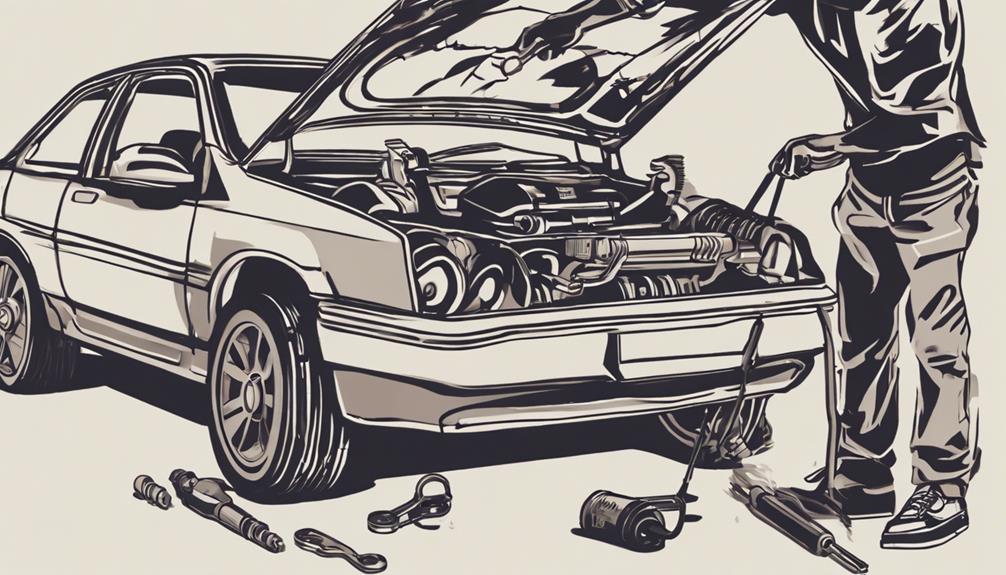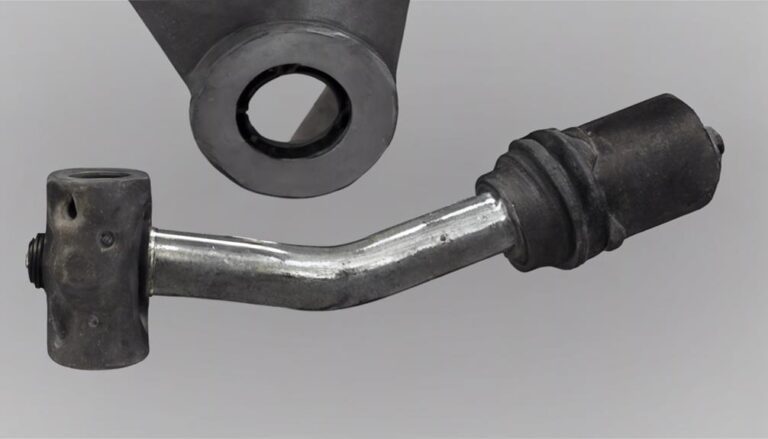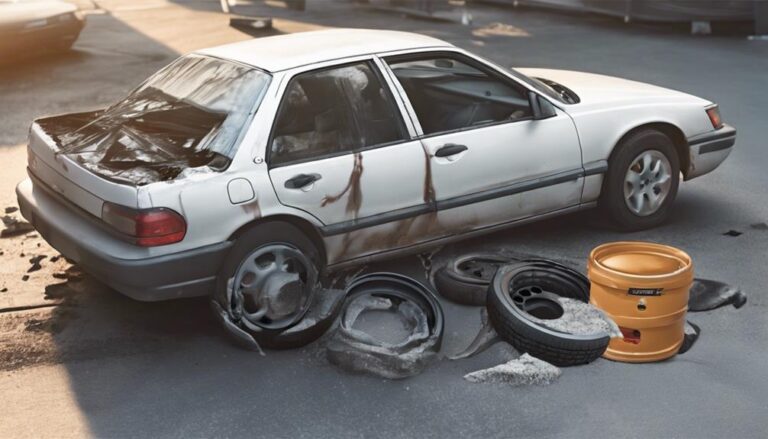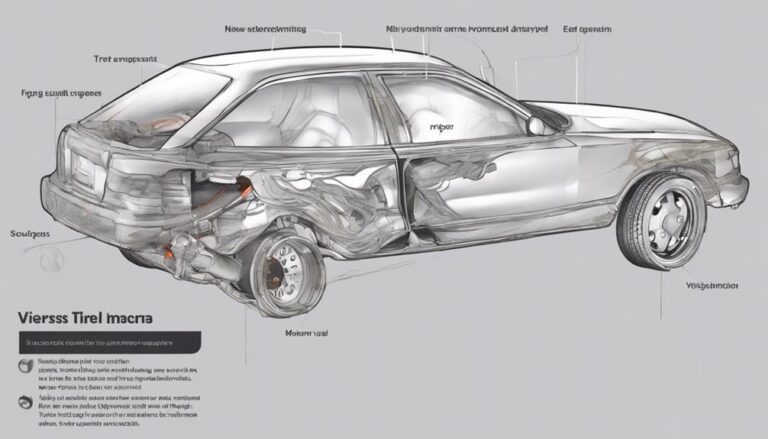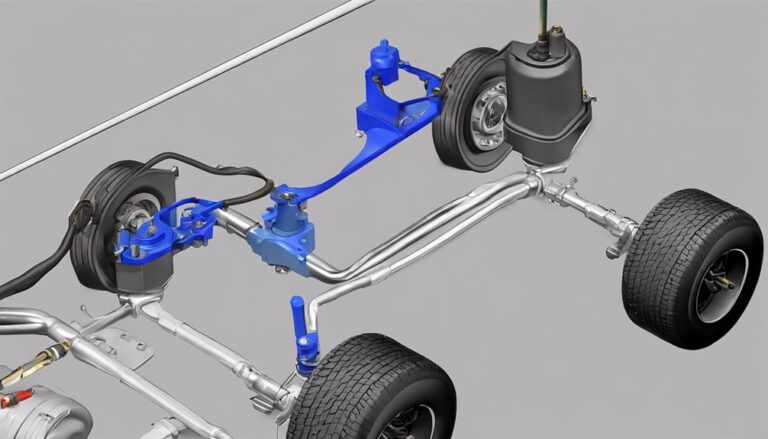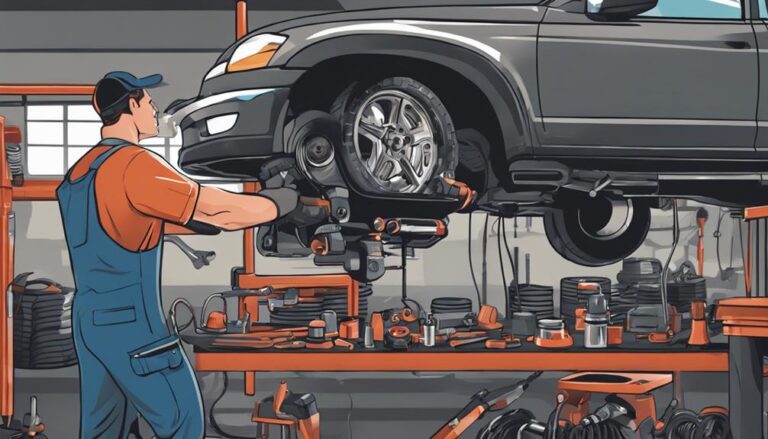Ultimate DIY Guide to Diagnosing Suspension Problems
When it comes to your motorcycle's suspension, think of it as the unsung hero silently ensuring a smooth and safe ride. But what happens when this crucial system starts to show signs of wear and tear?
How do you diagnose those subtle hints of trouble that could impact your riding experience? Understanding the nuances of suspension issues can be the key to unlocking a world of improved performance and safety for your two-wheeled companion.
Key Takeaways
- Regularly inspect suspension components for wear or damage.
- Adjust suspension preload and check for leaks.
- Seek professional assessment for accurate diagnosis.
- Consider upgrades based on riding style and budget.
Common Suspension Issues and Symptoms
If you notice your bike feeling lower or leaning more than usual, these could be signs of sagging suspension, indicating potential issues that need to be addressed. Suspension tuning is crucial for optimal performance, and rider feedback plays a vital role in identifying common suspension issues.
Harsh ride quality, where every bump is excessively felt, may point towards suspension problems. This can be a result of overly stiff springs, highlighting the need for suspension evaluation. Additionally, a diving front end, where the front dips more under braking, could be a symptom of worn fork oil or seals.
Addressing these issues promptly is essential to ensure a smooth and safe riding experience. By paying attention to these common symptoms and incorporating rider feedback into suspension tuning, you can proactively identify and resolve suspension issues before they escalate into more significant problems.
DIY Troubleshooting Steps
To initiate the DIY troubleshooting process for your bike's suspension system, begin by inspecting the overall condition of the front forks and rear shock absorber. Conduct a visual inspection of the fork seals and oil for any signs of leaks, as this could indicate potential issues affecting the suspension performance. Similarly, evaluate the rear shock absorber by checking for leaks or visible damage that may impact its functionality. Utilize tools like wrenches, socket sets, and screwdrivers to aid in your DIY repair endeavors.
When troubleshooting, adjusting the preload on the suspension system can help maintain the proper balance and functionality. If you find that the rear shock absorber is severely damaged beyond repair, consider replacing it to ensure optimal performance and safety while riding. By following these troubleshooting techniques and conducting thorough visual inspections, you can address potential suspension problems effectively and keep your bike in top condition.
Professional Assessment and Diagnosis
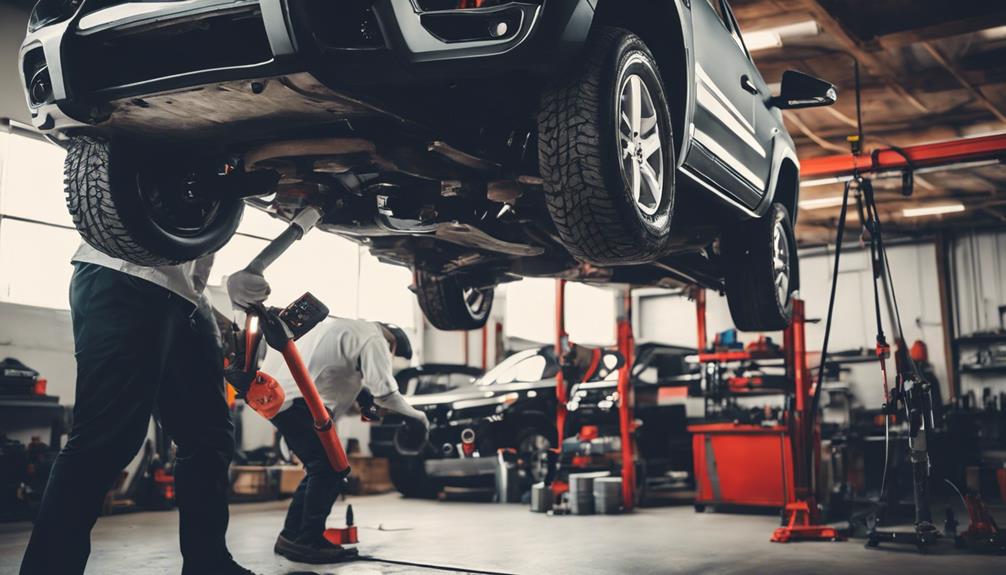
Begin by entrusting trained technicians to conduct a comprehensive inspection of your bike's suspension components for a precise diagnosis using specialized tools and equipment. These experts possess the necessary skills and knowledge to identify potential issues accurately.
Through the use of diagnostic tools and professional guidance, they can troubleshoot any anomalies in the suspension system. By examining signs of wear, damage, leaks, and other indicators, technicians can pinpoint the root cause of suspension problems. This precision in diagnostics is crucial for effective solutions tailored to your bike's specific needs.
Professional assessment and diagnosis play a vital role in ensuring the proper repair and maintenance of your suspension system. Therefore, seek expert advice and rely on the expertise of trained professionals to address any suspension issues promptly and efficiently. Trusting in their expertise will lead to a better understanding of your bike's condition and optimal performance on the road.
Maintenance Tips for Suspension Health
Regularly inspecting suspension components is key to maintaining optimal performance and preventing major issues. Checking for signs of wear, leaks, or damage in components like shocks, struts, bushings, and control arms can help you catch problems early. Proper suspension lubrication is essential to reduce friction and wear on moving parts, enhancing overall performance and longevity. Additionally, ensuring your suspension system is properly aligned is crucial for stability and handling.
Consider the following maintenance tips to keep your suspension system in top condition:
| Suspension Lubrication | Suspension Inspection |
|---|---|
| Regularly grease fittings and joints to prevent corrosion and maintain flexibility. | Inspect for leaks, wear, and damage in all suspension components. |
| Use a high-quality lubricant recommended by the manufacturer. | Check shock absorbers for fluid leaks and proper function. |
| Lubricate sway bar bushings and end links for smooth operation. | Look for cracks or tears in bushings and replace if necessary. |
| Ensure proper torque on suspension bolts for secure connections. | Examine control arms, ball joints, and tie rods for wear and play. |
| Check alignment regularly to prevent uneven tire wear and handling issues. | Verify that the suspension is at the correct ride height and adjust if needed. |
Upgrading Your Suspension System
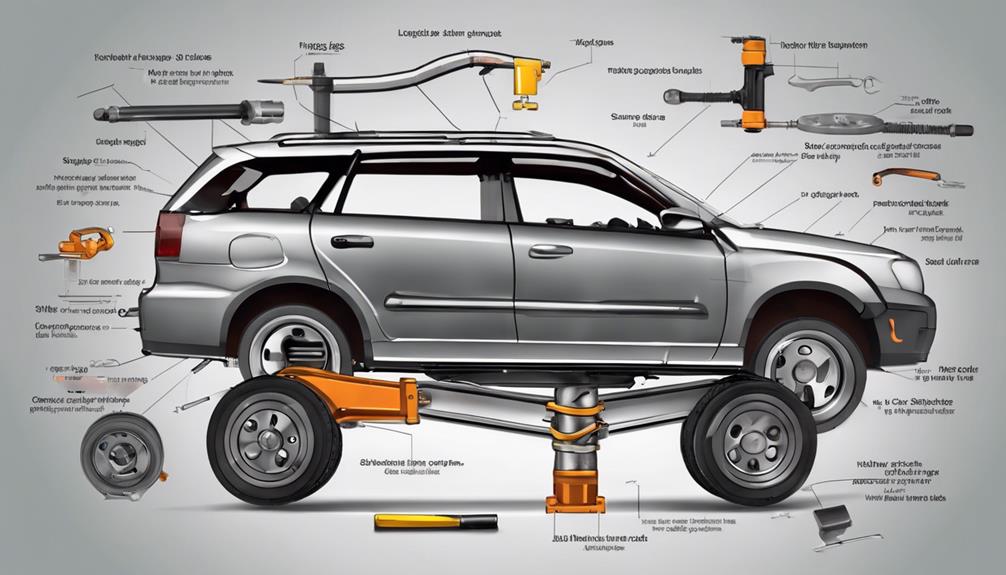
Considering different factors such as your riding style and budget, upgrading your suspension system can significantly enhance your vehicle's performance and handling. Performance upgrades can be achieved through the installation of aftermarket shocks and struts, which offer improved comfort and control while driving. When selecting suspension upgrades, it's crucial to ensure compatibility with your vehicle model to maximize the benefits of the enhancements.
By investing in upgrading your suspension system, you can experience handling improvements that lead to a smoother and more enjoyable driving experience overall. Whether you prioritize a more comfortable ride, better cornering abilities, or increased stability, there are various options available to cater to your specific needs.
Upgrading your suspension system not only enhances the performance of your vehicle but also contributes to better overall handling, making it a worthwhile investment for those looking to optimize their driving experience.
Frequently Asked Questions
What Are the 5 Steps to Diagnose Problems With Suspension System?
To diagnose suspension problems, start with a visual inspection, checking for leaks, noises, and wear. Measure bounce and rebound, assess tire wear for alignment issues, and examine shock absorbers, struts, control arm bushings, and sway bar links.
How Can I Test My Suspension at Home?
To test your suspension at home, perform a DIY inspection. Conduct a bounce test, inspect for oil leaks, check tire wear, listen for noises, and look for damage or corrosion. These steps help identify potential issues efficiently.
How Do I Know What Part of My Suspension Is Bad?
To know what part of your suspension is bad, visually inspect for leaks, uneven tire wear, and worn bushings. Listen for unusual noises. Pay attention to ride quality and handling issues, like bouncing or swaying, indicating specific problems.
What Is the Most Common Problem in Suspension System?
When diagnosing suspension issues, worn-out shock absorbers or struts are the most common culprits. Address this promptly to prevent a rough ride and uneven tire wear. Regular inspections and maintenance can help avoid this problem.
Conclusion
In conclusion, by identifying common suspension issues, following DIY troubleshooting steps, seeking professional assessment when needed, and maintaining or upgrading your suspension system regularly, you can ensure optimal performance and safety while riding.
Remember, prevention is key to avoiding costly repairs and enjoying a smoother, more comfortable ride. Stay proactive, stay informed, and ride with confidence knowing your suspension is in top condition.

